Amazing Artisan Bread for 40 Cents a Loaf - No Kneading, No Fussing, No Kidding
 February 26, 2010
February 26, 2010 Update: If you're interested, I've written an update on this technique here.
What if I told you that instead of buying bakery bread for four or five dollars a loaf, you could make delicious handmade bread whenever you wanted, at a fraction of the cost and it is so easy a kid could do it? Well, read on because this method of making artisan bread at home will change your life.
You can make incredible bread without having to do all the usual time consuming tasks of breadmaking :
- no need to make a new batch of dough every time you want bread
- no need to proof yeast
- no need to make starters or prefermented dough
- no kneading!
In the last few years, several methods for making easy no-knead bread doughs have crept up on the internet and gained popularity. Among the most popular have been Jim Leahy's No-Knead Bread and Jeff Hertzberg and Zoe Francois' Artisan Bread in Five Minutes a Day. These breads drastically cut down the amount of time and work that it was always assumed had to go into artisan bread making. Even the Zen Master of bread making, Peter Reinhart, has jumped onto the bandwagon, admitting that these no knead methods have made him rethink everything he knew about breadmaking:
"The results have forced me to reconsider all of the premises I once held sacrosanct".
So what is going on here?
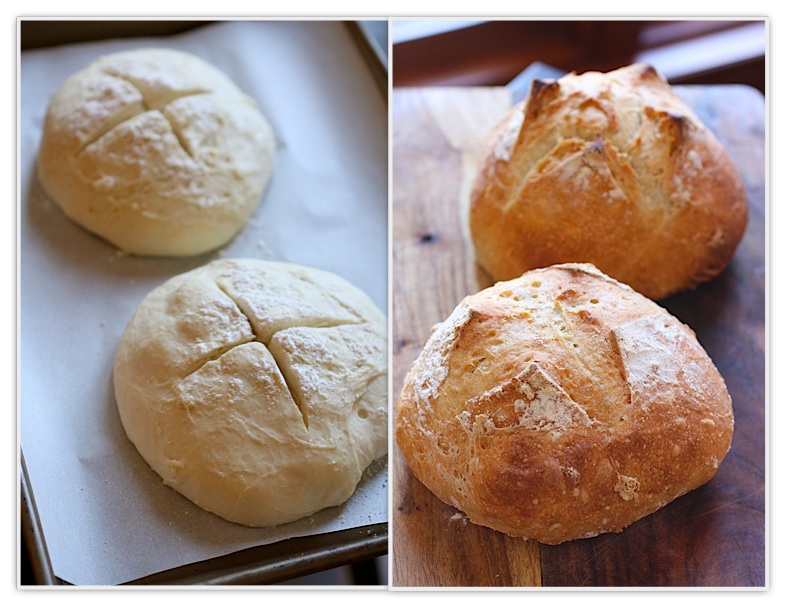
Boules Rising and Boules after Baking
The key is mixing up a high moisture, or "slack" dough, and letting it do a long fermentation in the refrigerator. It's long been known that a long fermentation contributes flavor to dough but it seems it also develops gluten and eliminates the step of kneading. The advantage in using refrigeration is that you can control the fermentation and you can make up a large batch of dough, enough for four loaves, and keep it in the fridge. If you make a very wet dough, it will be able to last in the refrigerator a long time, gaining flavor as it ferments and allowing you to make bread whenever you decide. This is not to say there is not a place for multi-stage, time-consuming bread making techniques which require 15 minutes of kneading - I love making my homemade focaccia, which takes three rises every time I make a batch. But this bread is absolutely a no-brainer. You mix up a big batch of dough in one container, a process which takes only a couple of minutes (remember, there is no proofing of yeast or starters to make). When you want bread, you cut off a hunk of dough and shape it. You can make various sizes and shapes: boules, batards, rolls or baguettes. It's just so convenient and makes such a beautiful bread with a crackly crust, you won't believe it. I've even shaped the dough into rolls. Peter Reinhart points out that the home baker has an advantage over the commercial baker with this technique - the commercial bakery does not have the refrigeration space to use a method like this. As a home baker, we can make up small batches of dough, refrigerate it and enjoy fresh bread whenever we want it. If you are buying fresh bread three times a week at $4.00 per loaf, you are spending about $50 a month on bread! This bread is only about 40 cents a loaf to make. And, since bread is best the day it is made, you don't have to drive to the grocery/bakery to get it every time you want a loaf.
To see how easy it is to get a loaf ready, you can watch me form a loaf in about 30 seconds:
This bread is very versatile, also. In both Peter Reinhart's book and Jeff Hertzberg and Zoe Francois' book, they give you many variations of breads made with the master bread recipe in each book. You can make whole wheat breads, cheese breads, herb breads, breads stuffed with sun dried tomatoes, Challah, Semolina Bread and on and on. Jeff Hertzberg and Zoe Francois have come out with another book, "Healthy Breads in Five Minutes a Day", for people who would like more whole grain recipes and gluten free breads. This is a great book, too, and has lots of wonderful ideas in it. I have all three books and strongly recommend them if you want to try easy bread making. It's nice to be able to make bread whenever the whim hits you - I have several types of doughs in my refrigerator, happily fermenting away.
In these recipes, instant yeast is used, which eliminates the need for "proofing" the yeast. Everything is simply mixed together. If you are interested in learning more about yeast, my recent "Yeast Explained" post may be of interest to you. Instant yeast is sometimes labeled "fast acting yeast" and is sold under the names of "Rapid Rise" and "Quick Rise" yeast. Also, Bread Machine yeast is simply instant yeast. I like to buy my yeast in the little jars instead of the packets because I can use only as much as I need out of the jar and it tends to be cheaper.

One way of letting the dough rest and rise is to place it on a pizza peel, dusted with some cornmeal. This works well when we make pizzas and pop them right into the oven. However, for this the bread seems to stick because you have to let it sit so long on the pizza peel and rest. So I place a small square of parchment paper on the pizza peel and put the dough right on that. When I slide it into the oven, it goes in along with the parchment paper and bakes up beautifully. If you want an extra crispy crust, just remove the parchment paper halfway through the baking time and return the bread to the pizza stone - this is what I do.
The dough can be stored in any plastic container with a lid or a bowl with plastic wrap placed over it. You want the gases to be able to escape as the dough rises, though - so wrap the plastic wrap over the bowl tightly and then puncture a little hole in the top. It is nice to have a dedicated plastic container, though, in the fridge for your dough, because you are going to just keep it in there all the time. Although these containers are recommended by the authors and the King Arthur Flour website has these nice dough rising buckets, I bought a square plastic-lidded container at my local grocery store because I thought it fit in my fridge better. You can see it in the photos below. I place the lid on tightly, but I punched a small hole in the top. This is important to do.
So get out a bowl if you don't have a plastic container, mix up a batch of dough and have your first loaf tomorrow. You won't believe it.
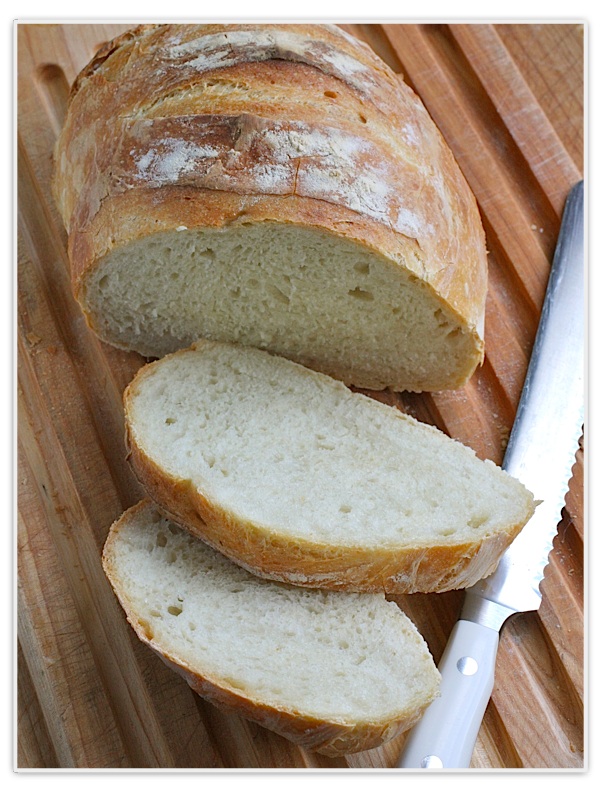
No Knead Artisan Bread
adapted from Artisan Bread in Five Minutes a Day
for a printable recipe, click here
makes four 1 pound loaves.
Ingredients:
- 3 cups lukewarm water
- 1½ tablespoons granulated fast acting (instant) yeast (2 packets)
- 1½ tablespoons kosher or other coarse salt
- 6½ cups unsifted, unbleached all purpose white flour*
(My favorite way to make this bread now is to use half bread flour, half all-purpose flour and throw in ½ cup wheat bran into the dough.)
*After baking, if your bread is gummy on the inside, try either increasing the amount of flour by ½ cup and/or increasing the baking time by 10 minutes.
Instructions:
Mixing and Storing the Dough
1. Warm the water slightly. It should feel just a little warmer than body temperature, about 100 degrees F. Warm water will rise the dough to the right point for storage in about 2 hours.
2. Add yeast and salt to the water in a 5 quart bowl or a plastic container with a lid.
3. Mix in the flour - kneading is unnecessary. (Note: I dump all this in my KitchenAid mixer, let it mix it for just about 10 seconds and then put it in the plastic container. I just find it easier to let the mixer do this part). Add all of the flour at once, measuring the flour by scooping it and leveling it off with a knife. Mix with a wooden spoon - do not knead. You're finished when everything is uniformly moist, without dry patches. This step is done in a matter of minutes. The dough should be wet and loose.
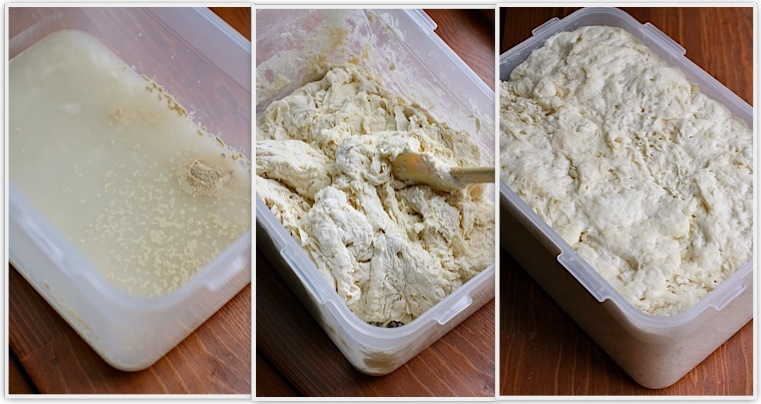
4. Allow to rise. Cover with a lid (not airtight). Lidded plastic buckets designed for dough storage can be purchased many places. (I used a plastic square food storage container I got at my local grocery store. I now use a Rubbermaid 21-cup Dry Food Container. I punched a hole in the top). You want the gases to be able to escape a little. Allow the mixture to rise at room temperature until it begins to collapse (or at least flattens on top), about two hours. Longer rising times will not hurt your dough. You can use a portion of the dough any time after this period. Fully refrigerated wet dough is less sticky and is easier to work with than dough at room temperature. So, the first time you try this method, it's best to refrigerate the dough overnight (or at least 3 hours) before shaping a loaf.
Baking
5. Shape your loaf. Place a piece of baking parchment paper on a pizza peel (don't have a pizza peel - use an unrimmed baking sheet or turn a rimmed baking sheet upside down). Sprinkle the surface of your dough in the container with flour. Pull up and cut off about a 1-pound piece of dough (about the size of a grapefruit), using scissors or a serrated knife. Gently stretch the surface of the dough around to the bottom on all four sides, rotating the ball as you go. Dust your hands with flour if you need to. This is just to prevent sticking - you don't want to incorporate the flour into the dough. The top of the dough should be smooth - the object here is to create a "gluten cloak" or "surface tension". It doesn't matter what the bottom looks like, but you need to have a smooth, tight top. This whole step should take about 30 seconds! Place the dough onto your parchment paper.

6. Let the loaf rise for about 30 - 40 minutes (it does not need to be covered). If it doesn't look like it has risen much, don't worry - it will in the oven. This is called "oven spring".
7. Preheat a baking stone on the middle rack in the oven for at least 20 minutes at 450 degrees F. Place an empty rimmed metal baking pan or broiler pan on a rack below the baking stone. This pan is for holding water for steam in the baking step. (If you don't have a baking stone, you can use a baking sheet, but you will not get the crisp crust on the bottom. You will still have a great loaf of bread. Baking stones are cheap and easy to find - Target carries them - and are a must for making pizzas, so go out and get one as soon as you can.)

8. Dust the loaf with a little flour and slash the top with a knife. This slashing is necessary to release some of the trapped gas, which can deform your bread. It also makes the top of your bread look pretty - you can slash the bread in a tic tac toe pattern, a cross, or just parallel slashes. You need a very sharp knife or a razor blade - you don't want the blade to drag across the dough and pull it. As the bread bakes, this area opens and is known as "the bloom". Remember to score the loaves right before baking.
9. Bake. Set a cup of water next to your oven.* Slide the bread (including the parchment paper) right onto the hot baking stone. Quickly pour the water right into the pan underneath the baking stone and close the oven door. This creates the necessary steam to make a nice crisp crust on the bread. Bake at 450 F for about 30 - 35 minutes, depending on the size of your loaf. Make sure the crust is a deep golden brown. When you remove the loaf from the oven, you will hear it crackle for a while. In baking terms, this is called "sing" and it is exactly what you want.
* update: I have recently begun skipping this step with the water. I believe it caused my oven window to eventually crack and I have found that my bread is still great even without the water. If you want an extra crispy crust, though, it is worth doing once in a while
10. Cool. Allow the bread to cool for the best flavor and texture. It's tempting to eat it when it's warm, and that's fine, but the texture is better after the bread has cooled.
11. Store the remaining dough in the refrigerator in your lidded (with a hole punched in the top) container and use for up to 14 days. Every day your bread will improve in flavor. Cut off and shape more loaves as you need them. When your dough is gone, don't clean the container. Go ahead and mix another batch - the remaining bits of dough will contribute flavor to the next batch, much like a sourdough starter does!
Bread is best eaten the day it is baked. Leftover baked bread is best stored at room temperature, unwrapped. Simply place the cut side of the bread on plate or counter. If your bread is gummy on the inside, try either increasing the amount of flour by 1/4 cup and/or increasing the baking time by 5-10 minutes.
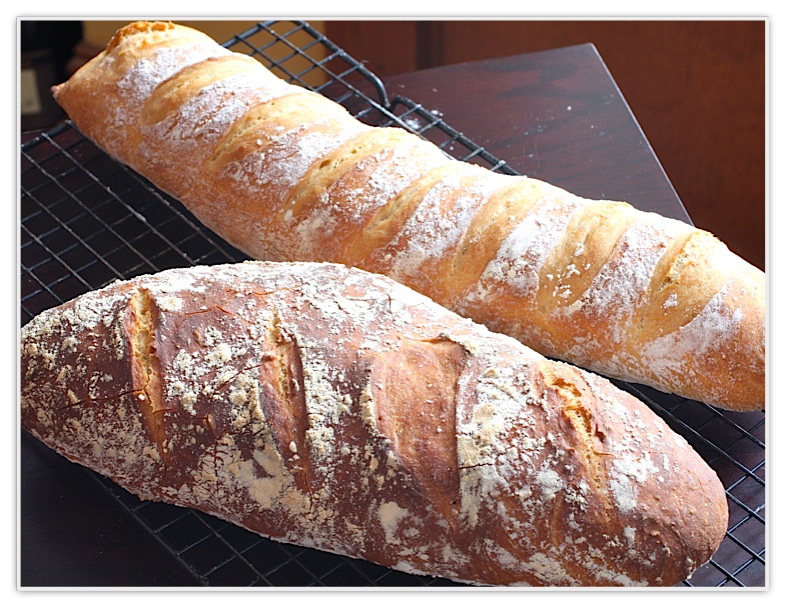
Check out the Artisan Bread in Five Minutes a Day website - Jeff and Zoe have great tips and recipes over there.

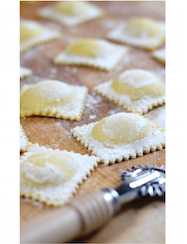
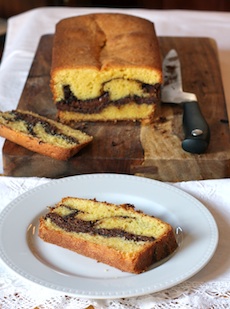
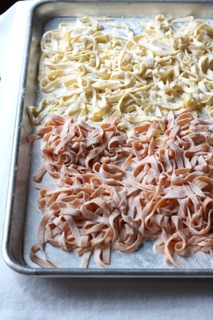
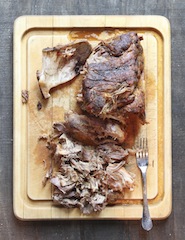
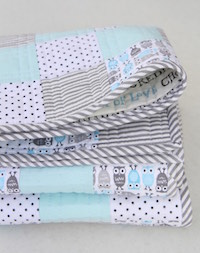
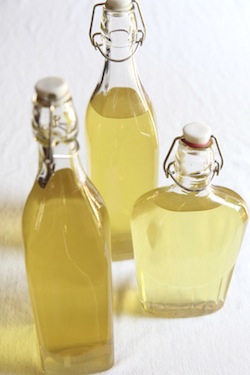
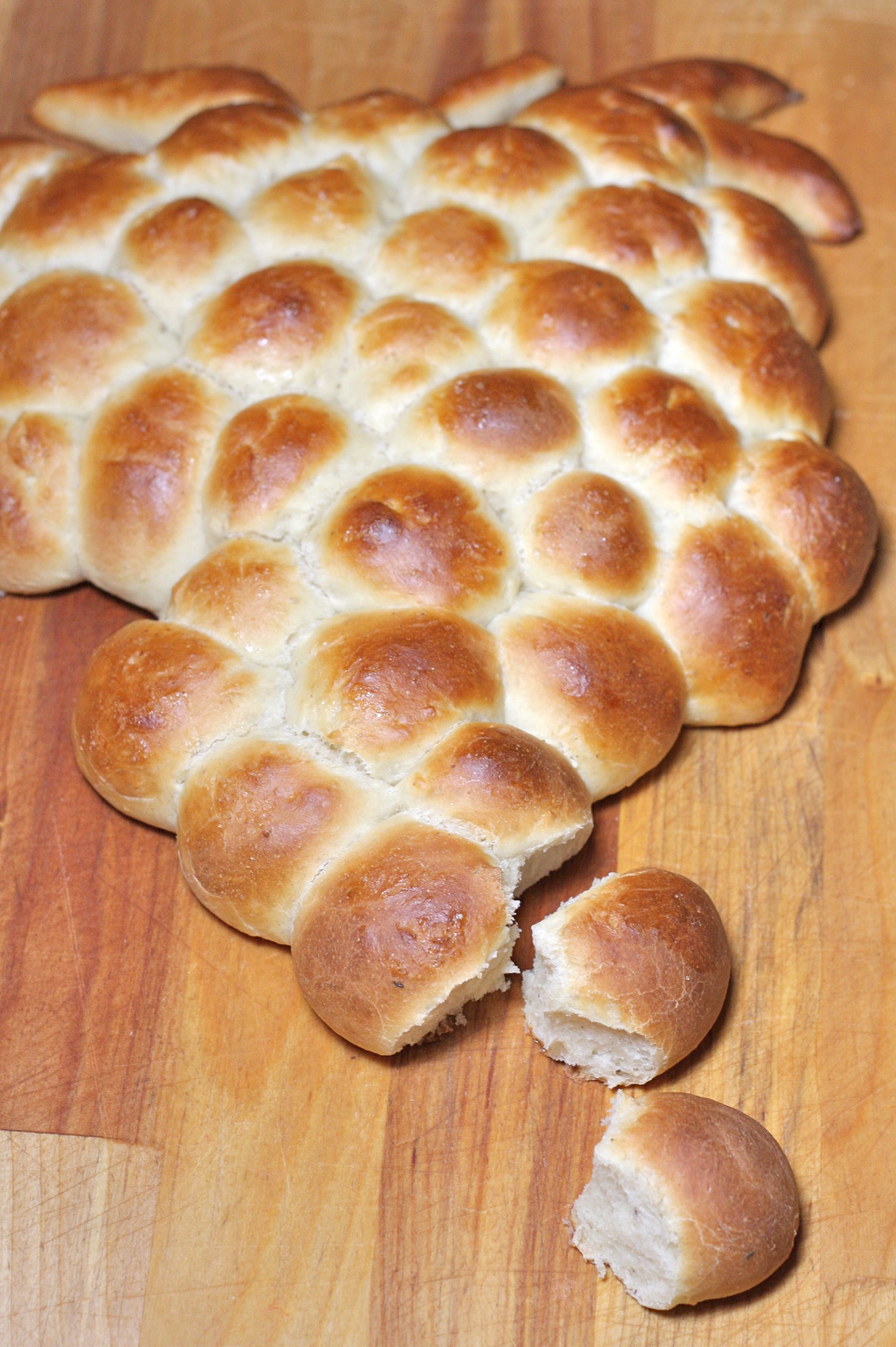

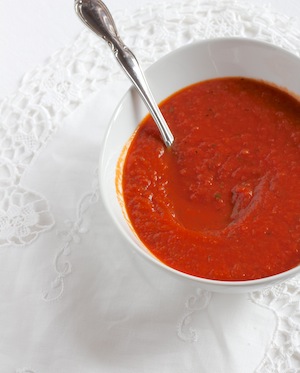
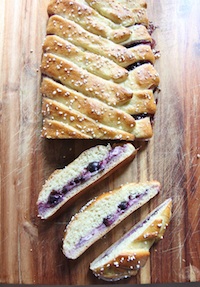

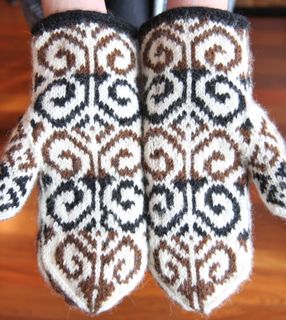






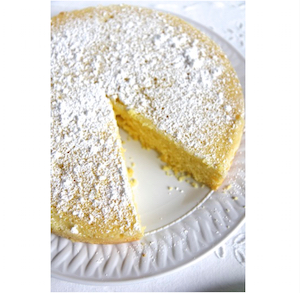



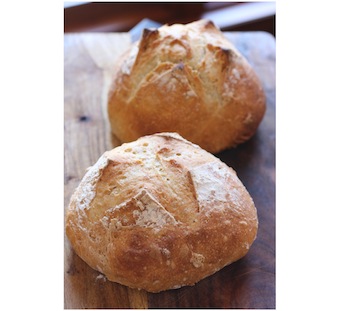


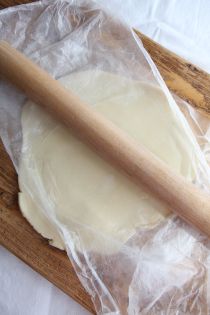

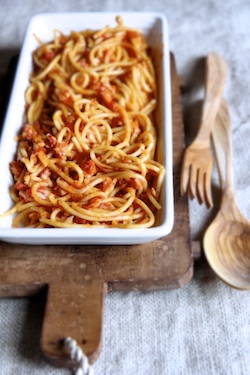
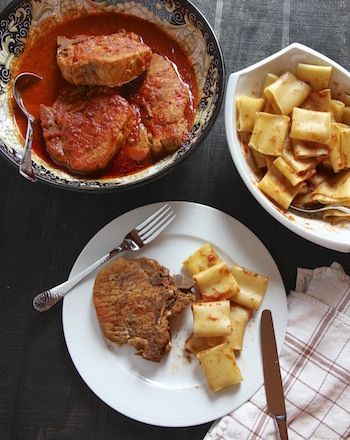









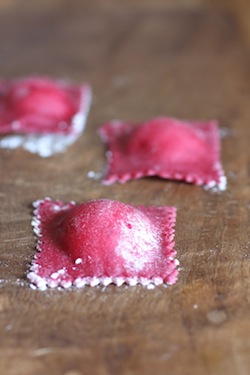

Reader Comments (468)
just mixed my first batch. it was not wet and sticky looking like your photo. a bit on the dry side. I know bread making has so many variables to it. do I add more water or just leave it?
Most likely it came out drier because of the fact that one cup of flour can be light if the flour is filled gently into the cup with a spoon and not packed down, or, it can be heavy if the flour is scooped up with measuring cup and even heavier if packed down. The difference is significant. Next time try the lighter cup approach.
As for your existing batch, given some time in a sealed container, a dough that seems dry at first will often be fine after the water has had time to be completely absorbed and the dough has a chance to relax. If it's still dry, add one tablespoon of water to the container of dough and spread the water on the surface of the dough.Then seal it up and give it 24 hours to be absorbed. Otherwise, make the best of the situation, just use it as it is and consider it part of gaining experience as a bread maker!
thanks so much.i did the scoop and level method but will try the gentler one. cant wait to try this tomorrow
uhmmm ok. I managed to mess it up.i weighed the dough out. used 1 lb and it was still small. when you form it are you suppose to form it flatter? it rose on baking but was , well, rather tall.. I let it cool. crust was fantastic but still a little doughy inside. will try all the suggestions and hope I get it right. it still got eaten.
ok on batch number 2. this one was so wet it stuck to everything. tried wetting my hands, tried flour on my hands. wanted to make a loaf for dinner, stuck it in fridge and will try baking tomorrow. will try one more batch after this and then I give up. don't know why I cant get it right.
ok on batch number 2. this one was so wet it stuck to everything. tried wetting my hands, tried flour on my hands. wanted to make a loaf for dinner, stuck it in fridge and will try baking tomorrow. will try one more batch after this and then I give up. don't know why I cant get it right.
ok on batch number 2. this one was so wet it stuck to everything. tried wetting my hands, tried flour on my hands. wanted to make a loaf for dinner, stuck it in fridge and will try baking tomorrow. will try one more batch after this and then I give up. don't know why I cant get it right.
From The Italian Dish:
Kathy: On your next batch of dough, try adding about 1/2 cup more flour to the dough so it's not so sticky. This will help. Some people find the dough a little too wet. Just mix it a little more. After it sits, it gets a little wetter so don't worry if it doesn't look wet enough. Also, when the dough is very cold and has been refrigerated it is much easier to handle. Please try it again with new batch of dough. I hope you find success with it because it's one of my family's favorite things. In fact, I have a loaf in the oven for dinner right now!
Ok Kathy, let's see if we can make your next attempt a success. Let's eliminate the measuring cup. Use your scale to weigh the flour and water. Instead of a full batch, make just one loaf and see how it goes this time. Follow the recipe in this article carefully with the following changes. Weigh 8 ounces of warm water and add 1 1/2 teas. rapid rise yeast. Weigh 10.66 oz (or 302grams) water and add 1 1/2 teas. coarse salt (or 3/4 teas.table salt) and mix together. Now mix the flour and water together and continue with the recipe. If you want to make a full batch use 24 oz of water with the reg. amount of yeast and 32 oz flour and the reg amount of salt if kosher ( or 2 1/4 teas. table salt ) Watch the video and if your dough , after being in the fridg, looks and feals wetter than the in the video just add a little more flour so youcan handle it easier. Also, it will not hurt the dough if you kneed in the flour briefly. Have fun. \( ・_・)
Ok Kathy, let's see if we can make your next attempt a success. Let's eliminate the measuring cup. Use your scale to weigh the flour and water. Instead of a full batch, make just one loaf and see how it goes this time. Follow the recipe in this article carefully with the following changes. Weigh 8 ounces of warm water and add 1 1/2 teas. rapid rise yeast. Weigh 10.66 oz (or 302grams) flour and add 1 1/2 teas. coarse salt (or 3/4 teas.table salt) and mix together. Now mix the flour and water together and continue with the recipe. If you want to make a full batch use 24 oz of water with the reg. amount of yeast and 32 oz flour and the reg amount of salt if kosher ( or 2 1/4 teas. table salt ) Watch the video and if your dough , after being in the fridg, looks and feals wetter than the in the video just add a little more flour so youcan handle it easier. Also, it will not hurt the dough if you kneed in the flour briefly. Have fun. \( ・_・)
wow, thanks so much. you are awesome
I made two batches of this dough so far and everything went fine and according to the recipe, but for this third batch my boyfriend wanted to try mixing the dough himself - it looked fine in the container, but instead of stretching, my handful of dough tore apart when I went to form a loaf. I haven't seen it do this before, and I wasn't home when my boyfriend mixed the dough, so I'm not sure what he may have done differently. Any suggestions for troubleshooting?
...he did it his way...
Found your blog through Pinterest and made this bread today. The first batch was really really wet and after addiing more and more flour to it I decided to start over again and weigh the ingredients out. I converted everything to grams and milliliters and that time the dough turned out much better. Although I still found it difficult to shape the loaf it really turned out quite nice, and even more important, it tasts great! So from the Netherlands I thank you for this recipe and I am sure I will be making many more of these loafs! Thank you. Rieneke
When you mix the ingredients using your kitchenaid mixer, do you use the dough hook or the paddle attachement? Thanks! It's a great article.
Since finding this recipe, it has been my go to!!! Hubby loooooves it! He's a carb-a-holic to say the least!! The first time I made the bread, I followed the recipe, The second time I made it I just mixed everything in the kitchen aid, separated in into two bread pans, let it rise, and baked it using your temp and time... Came out the exact same way, which is how I make it, about every two weeks! Thank you so much for sharing this recipe!!! It's great!!
From The Italian Dish:
Chuck: I use the dough hook when I make up my dough in the Kitchenaid mixer. It's a snap!
I know I'm a little late to the party here. I just FOUND you, found this link. I've tried making artisan breads before and I totally sucked at those recipes. I did.
I'm a cook, not so much a baker. This I can do and it came out perfectly. I need a little more practice at the 'gluten cloak' but everything else worked. It rested the 2 1/2 hours before I put it in the fridge for another 2 hours and then I couldn't wait.
I'm sold, convinced, have waited so long for something I felt confident enough to make.
Further, your site was so informative, it was everything I needed for a walk-through to make the bread. It's nothing less than I do for my own dishes.
You are AWESOME--thank you so much and I've shared this link everywhere I can. There are at least six other women I know who have the dough rested and in the fridge for tomorrow. They are more patient than I am.
Thanks again!
I wanted to thank you for this recipe. My mother baked the most fabulous breads and she's been gone decades now and I never learned. She was also a fab cook.
As a thank you, or just a 'something'..here is a recipe you might like to try. It's a seasonal fan fav.
I hope you like it.
http://tidewaterbound.blogspot.com/2013/10/butternut-corn-chowda.html
I am making your bread right now. Thanks a lot for the inspiration!
Hi Elaine, I'm a guy just retired and trying my luck at baking. And, heck, I'm really having fun. I'ved made a couple of loaves using your recipe and it turened out great. It tastes awesome, but I do have a couple of questions...
1. I've been using 3 cups all purpose, 3 cups bread and 1/2 cup whole wheat flour. Would using more yeast make for a lighter, fluffier bread.
2. How do you shape loaves other than round...like bagette, or longer oblong loaves.
Anyway, I'm sure I'll get better with practice. Again thanks for such an awesome blog, and easy to understand instructions.
From The Italian Dish:
Ron: So glad you're having fun baking. Keep at it - you'll get better and better. As for the bread, if you are using some whole wheat flour in your dough, you will have to add a little vital wheat gluten to your dough to get the bread to rise sufficiently. It is in item found in the baking section of your grocery store. A lot of bakers add this ingredient when they make whole wheat loaves, otherwise the yeast just can't do its job sufficiently. Try adding a couple of tablespoons to your next batch and see what happens.
As for the shaping, when I make a baguette or oblong loaf, I really can't do the stretching of the top like I do with a regular loaf. I simply put the dough on a well floured counter and roll it out with my hands to a baguette, stretching it a little as I go. It's pretty easy.
Hope this helps!
Hey Elaine, Thanks so much for getting back to me. I look forward to trying your suggestions with mt next loaves. Thanks again!!!
Thank you very much for this recipe! I am 25 and don't bake very often but this was so easy and the bread is delicious! I also do not own a KitchenAid mixer or baking stone but improvised. Will definitely be coming back here for more recipes!
Elaine,
I am so thankfull for this recipe and to you for sharing. With the state of things at the store's,prices rising and all, this gives people a chance to save some money to be used for other needs. Also gets us back to the basic's in life and thats important right now. You are truely an angel her on earth. Your bread looks so good,i feel like i just want to reach in this screen and grab some. I will be making this bread and enjoying every bite!
Thank you,Carlene.
Hi! I just recently found you and am I glad I did! I am so enjoying your blog and now - THIS BREAD!! O. M. G. You can bet it is at the top of my priority list now. I live alone. This is something I can do for fun and function. I can make small loaves. Anyway, I just love it. THANK YOU!
I am brand new at bread baking, so one questions: may I use rye or whole wheat flour? (Diabetic)
Thanks again for all the good recipes. Keep 'em comin'!
I must try this! I have a *very* large Tupperware microwave dish/bowl--pop the vent open and it's good to go for this! :)
After the bread is made into a loaf, can it be frozen? Then I could use the slices when I wanted to, for sandwiches or toast. Please let me know soon, and I will make some. It sounds great!
Just tried this!!! It was super easy and turned out beautifully! The recipe size is just perfect for us two though I think that a larger family might want to make a bigger batch to keep from having to make it so often as I am sure that bread this easy and fresh will become a staple for every meal.
I loved this bread. So easy !!! Can you freeze this bread and then rebuke after? Anyonne try that? What would hemp and time of baking be to revive? Would like to make some for presents but too many to make same day. Thanks, Bernadette
Can't wait to try this recipe! thanks
Hi, I know this post was uploaded a while ago, but I tried this and ended up with a dough that was really porous. Would you mind giving me some advice please?
From The Italian Dish:
Heyman: I don't know what you mean by porous - do you mean the unbaked dough itself or the finished bread? Was the dough too wet? I'm just not sure what you mean. You can also read through the comments and there is a lot of discussion there about the bread.
Hi Elaine,
I absolutely love this recipe. When I take the bread out of the oven, the crust is hard. Then as its cooling, the crust softens. I add water in the oven a well. Any idea why this happens? Shall I cook the bread longer?
I love this site and the wonderful pictures and recipes! I have been making this recipe for 2 or 3 years now and I still marvel at how easy it is and how delicious it always turns out. To the person who commented that the post wasn't yours, does it really matter? Just think of how many of us would be missing out on this great recipe if it wasn't posted here for all of us? Such trivial matters............ Keep up the great work! I love it and I'm sure there are tons of people who agree with me!
I left mine out last night, all night, but it was only a couple of loaves worth in the box. It still leaked over by the morning but I batted it back a little and popped it in the fridge till now.
I'm making some rolls for our nut roast burgers to go with some potato wedges and salad, nommy!!
This time I added bits if leftover dregs of flour at the bottom of the bags in the larder; some plain, some strong, some granary too. Going to see what they come out like and let you know :)
Thank you for this recipe, and all of the others too, what a great way to make and bake bread!
Hi there! First of all, I want to say a HUGE thank you to you for such a spectacular blog! I have been telling everyone I know about it since I discovered it. I have tried several recipes and they have all been fantastic, easy to make and delicious! Most importantly, my VERY fussy 5 year old daughter has LOVED everything I have made from your blog so far! She said to me tonight, "Mommy, I think I'm starting to like your meals now!"... My heart soared!
I was wondering if this bread could be made with spelt flour or almond flour. I have been substituting it for AP flour in all my muffins and it works really well, but I was unsure of how it would react in a bread. Any suggestions?
From The Italian Dish: Lee-Ann: Thank you for the kind words about my blog. In regards to the flour, I do not think that this recipe would work at all with Almond Flour but I think Spelt Flour is a possibility. You might do a little research on this and go to the Artisan Bread web site for answers: http://www.artisanbreadinfive.com/
they may be more able to answer your question. Good luck!
I made the 1/2 granary bread flour and 1/2 plain flour and it worked out very nicely, a little chewy and there were some open bubbles inside so it wasn't dense as you would think... lovely :) Got more on the go as we speak!
I received the book for Christmas and have been baking a loaf almost every day since. It's nice knowing there are no preservatives or high-fructose corn syrup in it --just flour, water salt and yeast. I sprinkle it with corn meal instead of flour before baking and sometimes add herbs to the flour before stirring in the water. I will never buy store-bought bread again.
First batch just gone it the fridge. Thanks for the great recipe and visual instructions
Great bread. Having baked bread for many years, my husband told me to stay with this recipe. Baking it on my pizza stone I know made a big difference in the crust.
Will continue to use this recipe.
Can I use a larger amount of dough and shape it differently without compromising the bread?
Edie
This is a great recipe. I have been using it for months. I make variations by adding a little honey or molasses, substituting a cup of wheat or rye flour, patting it out and adding cinnamon and raisins and then rolling it back into a loaf.
If you don't want to put water in a pan in the oven, you can still get a crisp crust by spraying it every ten to fifteen minutes with water from a spray bottle.
This sounds very much like Sourdough Starter the quick way with adding a small amount of yeast.
The bread looks good.
I make my dough in a Kitchen-Aide mixer, so long kneading times is not a problem. I like to let it go for 10 minutes. The point of kneading is to break down the gluten, so the dough can rise. If it's done by a machine, why not let it rip?
Wow, this bread looks amazing! With winter on its way here in South Africa I think it might be time for some break baking (to accompany the soup making). Just one question - 4 loaves is definitely too much to make at once. Has anyone tried having the recipe? I don't suppose it would be a problem to use half the ingredients for a smaller batch? Thanks. Kim
From The Italian Dish:
Kim: you don't have to make all four loaves at once. The beauty of this dough is that it can stay in the fridge for two weeks and you can just tear off as much dough as you want to bake.
Hi I was wondering if this recipe could be used for pizza dough?
Thank you so much for this post. I made this recipe today and it turned out wonderful! It was my first attempt ever at making bread.
I waited the 2 hours to let the dough rise, then put it in the refrigerator for an hour or two. When I went to separate and cut the dough, it was very sticky. Therefore I wasn't really able to form it like you have in the above photos. It ended up looking like a glob on the parchment paper. It didn't score the same way as the picture due to the globiness. However, it did bake up amazing, and had a nice crisp crust all around, while being springy and light tasting inside. It wasn't gummy either.
All in all, it was delicious and satisfying even though it didn't quite look like the photos above. Everyone should try this recipe, and just remember, even if it isn't coming together like the photos, doesn't mean that it isn't going to turn out. I am going to keep this batter in my fridge going, because my son said he would rather have the fresh bread for his lunch's, than the store bought kind. He ate two pieces with dinner! So go make bread!
From The Italian Dish:
Deb: I always make my dough the day before and let it to refrigerate all night. It is much easier to work with after it has been refrigerated for a day. You will see when you make your next batch. Hope this helps.